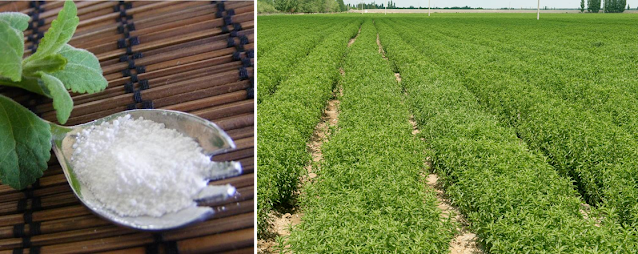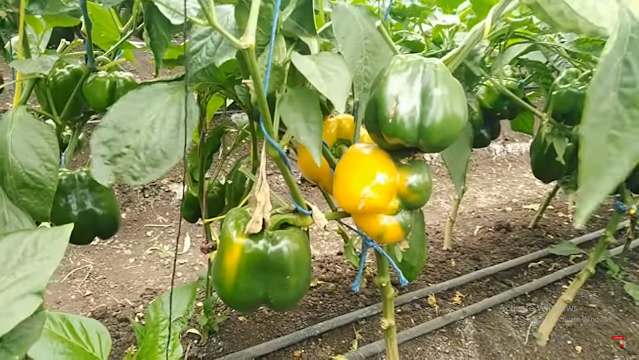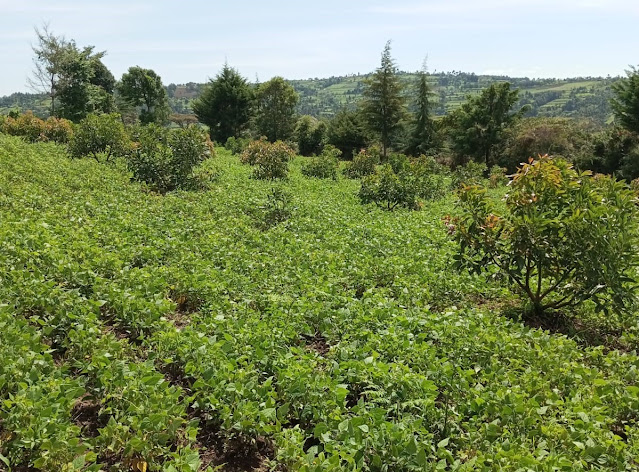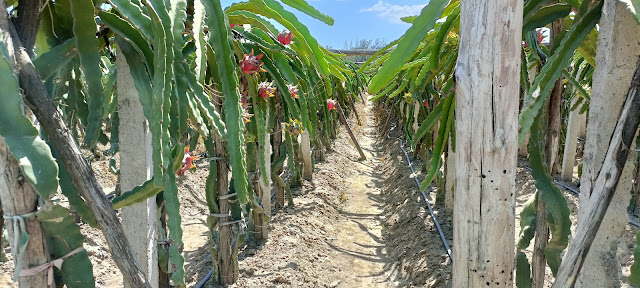Stevia farming in Kenya is still new to many; I wonder why yet Kenyans love sweet things. It is currently practiced mainly in the Rift Valley regions of Kericho, Nakuru, Uasin-Gishu, Narok and Lakipia. A few Meru and Bungoma farmers have also taken up the commercial farming of the sweet leaf. However, very few farmers within the country know about this high potential crop. Actually, Kenya is a pioneer in the commercial farming of stevia in Africa, with only a few farmers taking it up in Rwanda and DRC.
 |
| Stevia farming in Kenya |
What is stevia and what is so sweet about its farming?
Stevia
is a sweetener just like the sugar you put in your tea. But instead of it being
processed from sugar cane, it is obtained from the leaves of the Stevia plant.
While
it is 100 times sweeter than the ordinary cane sugar, stevia as a sweetener has
numerous advantages over cane sugar:
- It is a natural and free from calories meaning it cannot cause obesity and other calorie related problems.
- It is more effective than other artificial sweeteners and does not cause tooth decay.
- Stevia can safely be used as a sugar substitute in food and drinks for diabetes patients.
Sounds
really good, right? I am sure you might be wondering how these green leaves can
substitute the white sugar we are so used to. Let me teach you how to use it:
How is stevia used?
You
can actually grow stevia in your garden and use it right at home and never
again buy the unhealthy processed sugar that doctors have always warned us
against. This is how to use stevia leaves from your garden to sweeten your tea
or any other beverage:
- Harvest
your stevia leaves: Pick the freshest stevia leaves from your
garden, being careful to avoid the yellow or brown old leaves. You should also
avoid harvesting stems since they are not sweet.
- Wash
and dry the leaves: Using a steady stream of flowing water,
thoroughly wash the leaves to remove any dart or soil particles. Dry the leaves
by placing them over a paper under a shade for a few minutes or using a towel.
- Crush
the leaves: Put just a few leaves in a motor and use the
pestle to crush them to a paste. The idea here is to just break the leaves to
release the juices. You can even use your fingers.
- Add
the paste to your tea: Cook your tea as you usually do then once
ready, add the crushed stevia leaves and stir. Remember stevia is hundreds of
times sweeter than ordinary sugar so you need only a small amount. Generally,
you would need only 1 small leaf for a 250ml cup.
- Add
sweetener to your taste: The taste (sugar levels) of your stevia
can vary depending on the variety and environmental factors of your garden. You
should therefore keep adding the stevia paste until you achieve your desired
sweetness.
What are the requirements for growing Stevia?
You
might think that something so sweet and precious requires out of this world
kind of conditions to grow. It is not so with stevia. Stevia is relatively easy
to grow. Here are the conditions necessary for its growth:
Climatic Requirements
Since
stevia is leafy, it grows best in areas with high humidity and rainfall (between
1000 and 1500mm of rainfall annually). Long periods of sunlight and warm temperatures
also encourage fast regeneration of leaves after harvesting. The best areas
would therefore be those experiencing temperatures between 20°C to 30°C. Most
places in Kenya meet this condition.
Stevia is sensitive to extreme cold temperature and is easily damaged by frost. Therefore, we should avoid farming it in the highland areas where night temperatures fall below 10°C.
Soil Requirements
Stevia grows best on well-drained sandy loam soils that are rich in organic matter and nitrogen. Slightly acidic soil with a pH of between 5.0 to 7.5 are ideal. Remember to always do your soil test to determine the nutrients that you need to replenish. It is also important to incorporate farmyard manure at planting to increase the organic matter in your soil.
Irrigation Requirements
While
stevia is a drought-tolerant plant and would survive long periods of dryness, it
is important to ensure that the plants get sufficient soil moisture for optimum
production. As such, you will need to irrigate the plants during the dry months
of the year.
However,
be careful not to over water and cause the sweet plants to suffer root-rot.
There isn’t a fixed amount of water needed to irrigate the plants since this is
determined by the nature of soils and the weather conditions.
Is
your area good for stevia farming? Now let us get into the real action
How to grow Stevia
- Choose the best location: choose your plot as per the conditions that we described earlier. An open field receiving 10 to 12 hours of sunlight, with well drained soils.
- Prepare the land: conduct your soil test and correct the soil as per the recommendations. Plough the land to achieve a fine tilth and add sufficient amounts of compost manure to the soil. Make sure that the soil is free of weeds and any other plants that may compete with the stevia for nutrients.
- Obtain quality stevia seedlings: Stevia seedlings can be obtained from Richfarm Kenya. You can call them on 0724698357. They will deliver to you or you can go pick them from their nurseries in Embu or Naivasha.
- Transplant the seedlings: The best spacing for stevia is 45cm between rows and 20 to 30 cm from plant to plant. With this, an acre should accommodate approximately 40,000 plants. It is not advisable to intercrop stevia with other crops.
- Maintaining the stevia farm: Ensure that the farm remains free from weeds and the plants are well irrigated during the dry seasons for maximum productivity.
- Control pests and diseases: Stevia is relatively pest and disease-resistant, so you won’t have to worry about keeping the knapsack sprayer on your back. However, you should be keen to scout for any threats every day. If you discover any pests or diseases, we recommend that you use organic control methods. This is because it is the leaves that are consumed and we do not want to contaminate our sweetener.

Best spacing for stevia is 30x45cm

Harvesting Stevia
In
Kenya, your Stevia plants will be ready to start harvesting in 3 to 4 months
after transplanting the seedlings. The freshest leaves are harvested every 3
months after that. Stevia is a perennial plant from which you will keep
harvesting for more than 7 years. After this, you may need to plant a new generation
for continued high yields.
The profitability of Stevia farming in Kenya
An
acre of stevia produces 1000kgs-1500kgs per harvest. The farmgate price for the
fresh leaves is currently at around Ksh100 per kilo. Hence a farmer is able to
make Ksh100,000 per harvest and up to Ksh400,000 per year from every acre.
Stevia market in Kenya
The
crop is relatively new in Kenya and local demand is still very low. However, the
demand for the natural sweetener is on the rise as more people become more
health conscious.
The
good thing is that there are companies that contract farmers to produce stevia
for export. Some of the companies are PureCircle and Stevia Group East Africa.
As production increases, the country will attract investors in processing industries
and create a greater market for the plant.
At
the moment, you can be the smarter one and invest in a leaf drying and crushing
facility to make stevia leaves powder. This would definitely sell well in the
local super markets, especially in the high end ones whose clientele now
inclines towards healthy eating.



















